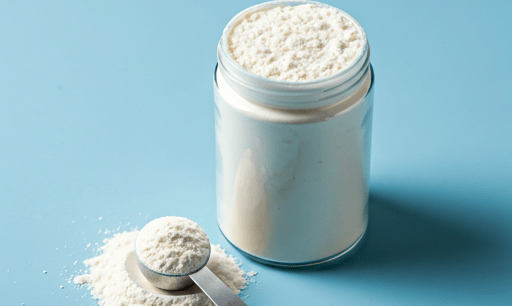Complex Coacervates of Lactoferrin and Osteopontin: Nestle's Innovation
DAIRY & ALTERNATIVES NUTRACEUTICALS


The Role of Lactoferrin and Osteopontin in Health
Lactoferrin (LF) is an iron-binding glycoprotein prevalent in human milk and known for its antimicrobial, anti-inflammatory, and immunomodulatory properties. Its ability to reduce late-onset sepsis and necrotizing enterocolitis in infants has been validated in numerous clinical studies. Furthermore, LF supports bone metabolism by stimulating osteoblast activity, promoting bone growth, and inhibiting osteoclastogenesis, which helps mitigate conditions like osteoporosis.
Similarly, osteopontin (OPN), a phosphorylated glycoprotein abundant in human milk, plays a critical role in immune system development and bone homeostasis. Studies have shown OPN's ability to influence bone-cell proliferation, migration, and adhesion, making it essential for skeletal health and the prevention of metabolic bone diseases. However, its low concentration in bovine milk and infant formula has limited its broader application in nutritional science.
Challenges in Lactoferrin and Osteopontin Utilization
While the benefits of LF and OPN are well-recognized, integrating these proteins into products like infant formulas has proven difficult. Lactoferrin, when introduced during wet mixing, undergoes denaturation and refolding due to pH and temperature changes, resulting in viscosity increases and protein instability. Conventional sterilization methods, such as heat treatment, exacerbate this issue by denaturing the protein.
Likewise, enhancing the bioactivity and bioavailability of LF and OPN has remained a challenge, especially when targeting specific health outcomes like metabolic disease prevention or bone health improvement. Prior attempts to create coacervates—stable complexes formed by these proteins—failed to achieve the desired stability or functionality.
The Innovation: Complex Coacervate of Lactoferrin and Osteopontin
Nestlé’s patented process introduces a stable coacervate of LF and OPN that overcomes these longstanding challenges. The coacervate is formed by mixing aqueous solutions of LF and OPN under carefully controlled conditions. Adjusting the pH to a range of 4.8–5.2 and maintaining a protein mass ratio of lactoferrin to osteopontin between 3.8 and 4.2 are key to achieving optimal stability.
This coacervate exhibits enhanced bioactivity and bioavailability, ensuring the proteins retain their functional integrity during processing and digestion. By allowing the coacervate to be integrated during the wet mixing stage, the process eliminates the need for costly aseptic dosing equipment and heat-based sterilization, streamlining production and reducing costs.
Applications and Health Benefits
The potential applications of this innovation are vast. The LF-OPN coacervate can be incorporated into various nutritional and pharmaceutical products, including infant formulas, dietary supplements, and therapeutic foods. Key health benefits include:
Bone Health Promotion:
Stimulates osteoblast activity, promoting bone growth and healing.
Inhibits osteoclastogenesis, preventing bone loss and diseases like osteoporosis.
Metabolic and Inflammatory Disease Management:
Supports prevention and treatment of conditions such as obesity, pre-diabetes, and diabetes.
Reduces inflammation, mitigating risks of sepsis and necrotizing enterocolitis.
Enhanced Infant Nutrition:
Improves immune system development and reduces disease susceptibility.
Provides critical support for growth and development in preterm and low-birth-weight infants.
Conclusion: A Leap Forward in Nutritional Science
By addressing key production challenges and enhancing the bioavailability of these proteins, the invention sets the stage for transformative applications in nutrition and healthcare. Whether it’s promoting bone health, managing metabolic disorders, or enhancing infant formulas, this innovation could have far reaching impact.
